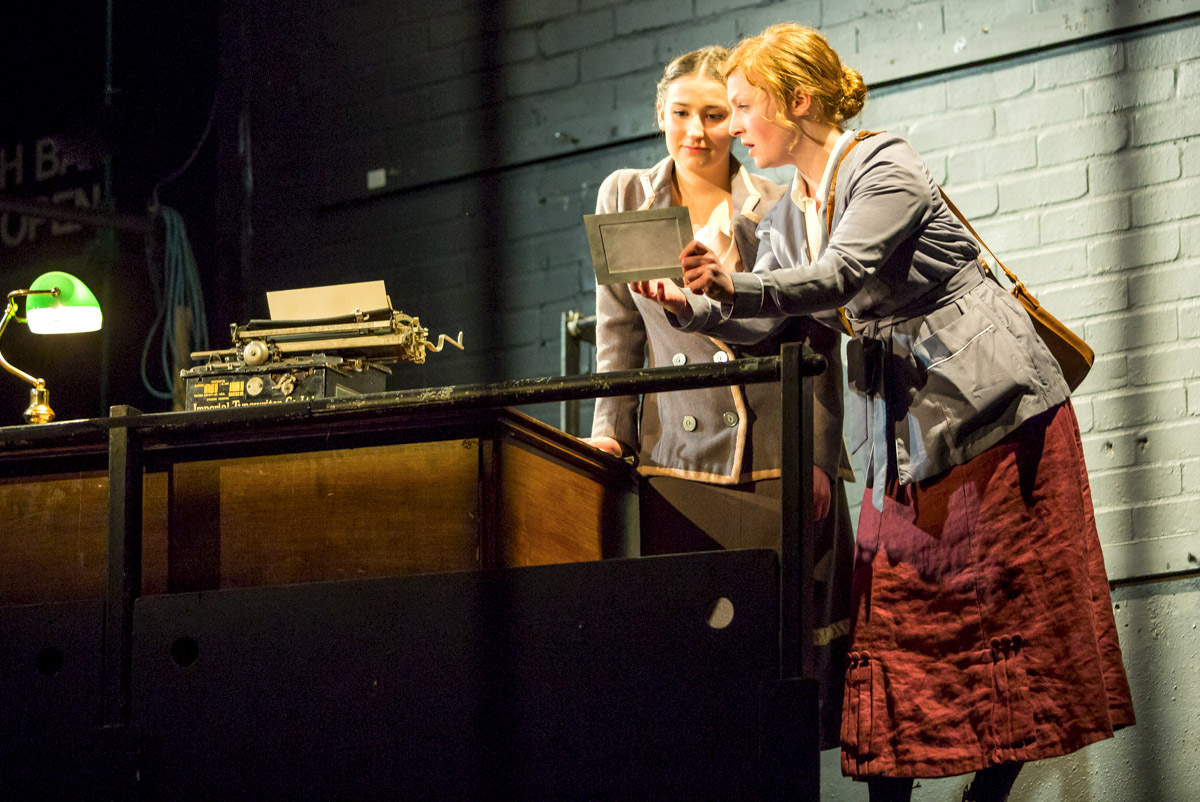The Light Burns Blue by the Bristol Old Vic Young Company is a fresh and dynamic retelling and re-imagining of The Cottingley Fairies legend. The play was devised by the company under the direction of Lisa Gregan and commissioned by Tonic Theatre as part of their Platform series, a new series of scripts for schools and youth groups with the aim of ‘putting girls centre stage’
In The Light Burns Blue the girls are not only put centre-stage; they own the stage. The female characters – our heroes – are presented as strong, often resilient women, who follow their passion and act on their convictions (even if those convictions are sometimes a little wobbly.) All of the women are fantastically well rounded, from Elsie’s younger cousin, Francis (Carys Patterson), an endearing and convincing young girl, to her Mother Polly (Jess Clough-MacRae), who defends her daughter with a genuine passion.
Even the chorus of schoolgirls – made up of most of the rest of the company – are a breath of fresh air, convincing, minor female characters with playfulness and depth. As is often the case with youth theatre companies, The B.O.V Young Company is a female-heavy affair, a wealth of young, talented actors who are often left stranded by a profound lack of female characters in theatre. When given the opportunity to create and devise their own parts, alongside writer Silva Semerciyan, the cast flourish; the gaggle of girls alight the piece with energy, comedy and a genuine sense of sisterhood.
The two characters who drive the piece are Elsie, played by Kate Alhadeff, and Winifred Douglas, played by Jenny Davies. One is the real, complex and often overlooked girl who took the five infamous photos in 1917. The other – Winifred – is drawn from other sources, an investigative journalist who tries to uncover the truth. She is an invention of the company, created with some artistic licence in order to provide conflict and to ask the really important question – why did Elsie Wright fake the photographs?
As the play moves through the Summer that brought the two girls fame, it is continually anchored by the scene of Winifred and Elsie, as Winifred asks her questions and digs away at the truth. In order to provide the story with momentum, we are told that within a short frame of time Winifred will force Elsie to confess her wrongdoings to the press. However, this dramatic tension is never fully realized and though both actors are gripping to watch, the scene does lose pace as the interrogation continues. We are told what is at stake for Elsie, but we are never really shown it. The invention of Winifred though is a very clever device which focuses the story and highlights the crucial themes – the very nature of art, deception and reality. ‘Convince me,’ says Winifred, ‘that you’re an artist and not a fraud.’
The company make use of music, mime, projection, physical and choral sequences to tell the story. The piano accompaniment moves from melodic to jaunty, though it does occasionally get a little repetitive, but the cast create some wonderful images and sequences, from the absurdly comic to a very touching moment which highlights the waiting women of Cottingley as they are left behind during the war.
At times a little scratchy, there is a sense of a mood not quite being set, a setting not quite achieved. Some of the physicality – such as the workers in the news room – falls a little flat and seems superfluous. And occasionally – especially as the male members of the cast try to grab some attention – the style is flung uncomfortably into crude satire, filled with all-too-easy caricatures, such as the Art Club, or Madam Ladvasky.
But, all in all, this is a very talented company, who are clearly working as part of tight-knit team to achieve an engaging and vibrant show. The energy that every performer fills his or her role with is remarkable. It is the women who shine through. It will certainly be interesting to see what lies ahead for The Light Burns Blue. ★★★☆☆ Chris White 17/04/15


